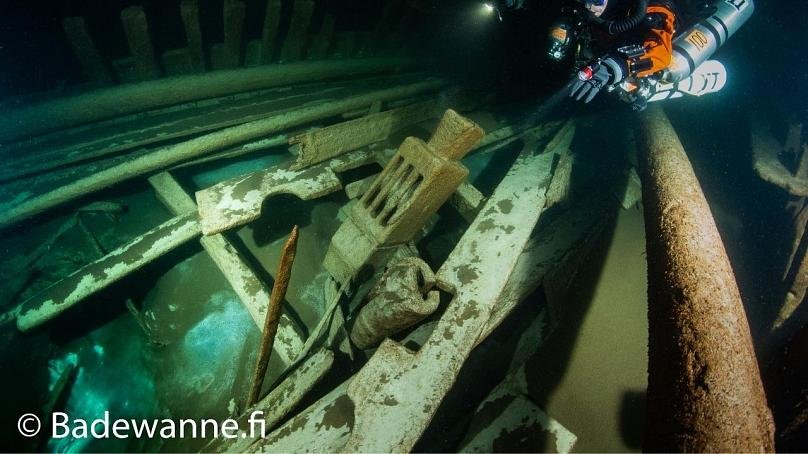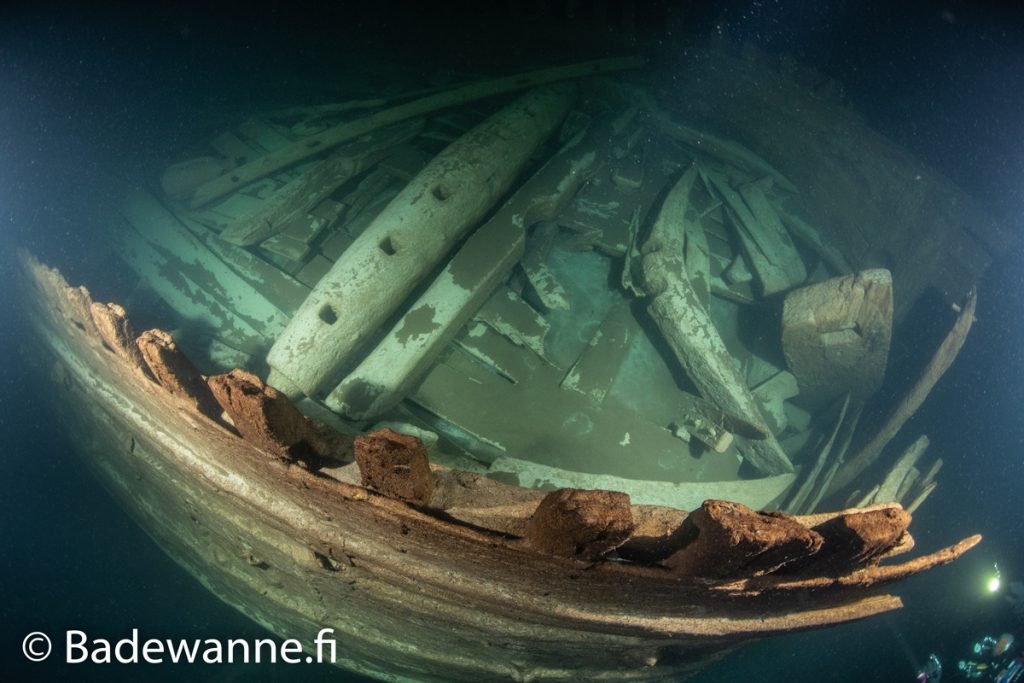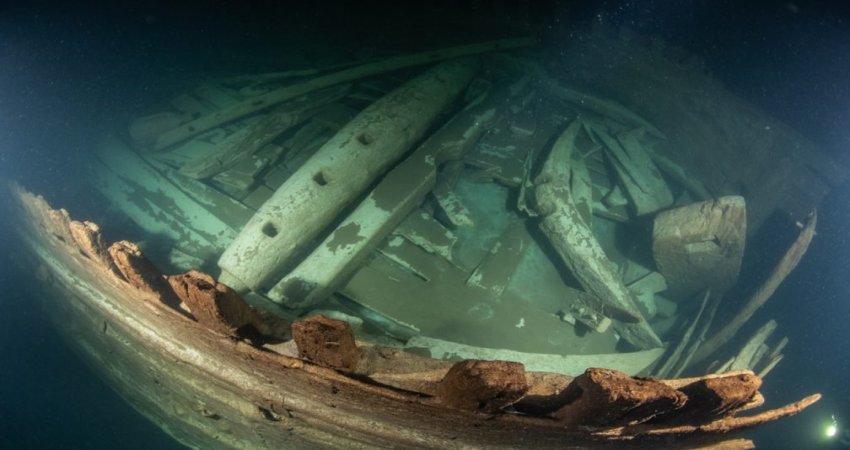Conny Waters – MessageToEagle.com – A team of volunteer Finnish divers accidentally discovered the Dutch 17th-century shipwreck in the Baltic Sea water at 85 meters depth.

The wreck od the Fluit Ship was found with only minor damage caused by a collision with a fishing trawler, which damaged its deck, bow, and masts. A few planks are missing but otherwise, the ship is intact. Dutch ‘Fluit’ ships were once frequently seen in the Baltic trade between the 16th to the mid-18th century but are now rarely discovered even as wrecks.
Therefore this completely preserved Dutch Fluit ship is a great opportunity to further studies which will be continued by Badewanne team co-operation with Finnish Heritage Agency of Antiquities and other partners, Including Associate Professor Dr. Niklas Eriksson, Maritime Archaeologist, Univ. of Stockholm, Sweden.
Badewanne Diving Team was working with documentation on some wrecks dated to the 1st or/and the 2nd World War and possibly located at the mouth of the Gulf of Finland.
The shipwreck found recently was a three-masted ship with very capacious hull design, was carrying no guns, and had a very large cargo capacity. Moreover, “the Fluit ships utilized a very novel and advanced rigging using cleverly designed pulley and tackle systems for hoisting the yards and sails and controlling them, “Badewanne divers.

Anchor windlass in the bow, viewed from the starboard side. Badewanne.fi
“The wreck reveals many of the characteristics of the fluit but also some unique features, not least the construction of the stern. It might be that this is an early example of the design,” says Dr. a maritime archaeologist at the University of Stockholm.
It is only in some and rare places around the world, including the Baltic Sea, wooden wrecks can survive for centuries without being destroyed by chemical, biochemical and biological decaying processes. Due to low salinity, absolute darkness, and very low temperatures all year round these processes are very slow in the Baltic. Perhaps most importantly, wood-boring organisms such as shipworm cannot live in such an environment.
Even in temperate seas, all wooden wrecks vanish in decades, unless buried in sediments.
From the 13th century the Hanseatic League controlled the trade, but during the 17th Century, the very efficient merchant navy of the Dutch Republic gained control of this trade. This trade received a significant boost in importance and profitability after Czar Peter the Great founded his new capital St. Petersburg at the estuary of Neva river, in the easternmost part of the Gulf of Finland.
“These advanced technical features facilitated a much smaller crew than earlier ship types, making the trade more profitable. Another totally novel feature onboard the Fluit ships were that the entire crew lived “abaft of the main mast” – Master, mates, bosun, cook, and all ratings, all occupied the same space ‘tween decks and ate at the same table. This was very unusual in contemporary society, let alone in a highly hierarchic maritime world.
Fluit ships were dominant in the Baltic trade between the late 16th to the mid-18th century. However, very few of these once common ships have survived, even as wrecks.
More details on Badewanne Diving Team’s website.
Written by Conny Waters – MessageToEagle.com – AncientPages.com Staff Writer







